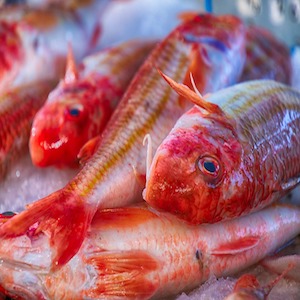A Quality Index Method-based evaluation of sensory quality of red mullet (Mullus barbatus) and its shelf-life determination

Submitted: 11 October 2022
Accepted: 21 December 2022
Published: 8 March 2023
Accepted: 21 December 2022
Abstract Views: 1409
PDF: 252
HTML: 61
HTML: 61
Publisher's note
All claims expressed in this article are solely those of the authors and do not necessarily represent those of their affiliated organizations, or those of the publisher, the editors and the reviewers. Any product that may be evaluated in this article or claim that may be made by its manufacturer is not guaranteed or endorsed by the publisher.
All claims expressed in this article are solely those of the authors and do not necessarily represent those of their affiliated organizations, or those of the publisher, the editors and the reviewers. Any product that may be evaluated in this article or claim that may be made by its manufacturer is not guaranteed or endorsed by the publisher.

 https://doi.org/10.4081/ijfs.2023.10927
https://doi.org/10.4081/ijfs.2023.10927




